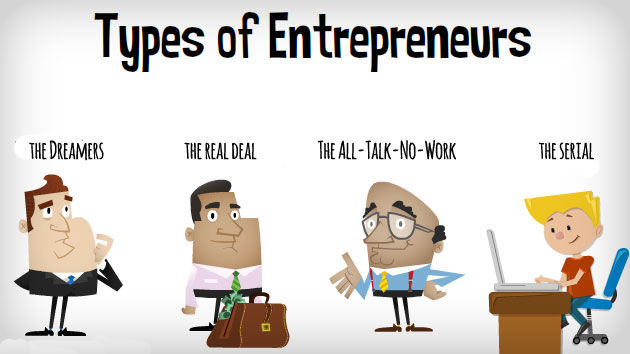Become a Better Problem Solver

Life is about finding a way of living that makes you the happiest. However, that’s not always easy, and we all have to deal with obstacles and problems we don’t expect. Whether your problems stem from work, personal or emotional matters, a simple mindset shift can change how you go about them. That’s the art of problem solving, and with the help of a little-known phenomenon called psychological distance, that’s what we’re going to dive into today.
What Is Problem Solving?
Problem solving refers to the ability to tackle new, difficult situations with relative ease. It isn’t a personality trait or a certain characteristic that only some possess; rather, it’s a way of thinking developed through consistency.
Solving problems, at its core, comes from these three actions:
- Identifying the problem
- Looking at the problem from a distance (I’ll show you how)
- Writing down the steps or a plan of action to solving the problem
However, problem solving isn’t necessarily the same as thinking logically. Instead, it requires taking a step back from the problem itself and attempting to think outside the box, something that cannot always be done pragmatically. It’s true that logical problem solving can be used at work, but when it comes to personal development and more emotionally-charged topics, you need to push your boundaries to come up with the right solutions.
That’s why the skill of problem solving is so valuable to your personal development. It’s a tool for personal growth, and it acts as a meta skill that helps you deal with everything life throws your way.
How Can Problem Solving Benefit You?
Whether you’re looking for a way to establish your business or brand, or just growing personally, being a strong problem solver can help you in many ways, including:
- Successfully guiding your life or your business down the path you want, independently of the roadblocks that confront you
- Identifying problems you couldn’t see before due to a different life perspective
- Spending more time on developing solutions rather than worrying about them
- Adding an extra layer of creativity to your way of thinking
I could go on with the benefits of being an adept problem solver, and what that can do for the people and organizations around you. The most important entity that needs your problem solving skills, though, is yourself. Here’s my seven-step process for shifting your mentality into that of a problem solver right now.
How To Turn Yourself Into A Problem Solver: Step-by-Step
- Sit in a calm, relaxed place.
- Think about the first problem you want to solve in your life.
- Once you can clearly identify the problem, imagine that the problem is happening to a friend of yours, not to you.
- Take detailed notes on the advice you would give your friend in solving the problem.
- Then take the same problem and imagine it’s happening to you, but rather than it happening now, envision it happening to you one year from today.
- Take detailed notes on how you would prepare to solve the problem step-by-step in advance.
- Make a step-by-step plan for taking action on your best solution. Take the first step today.
Why does this all work? Because of a little-known phenomenon called psychological distance. Psychological distance refers to how near or far we perceive ourselves to be to a given event or subject. When you think of a problem happening to your friend, not yourself, you’re injecting psychological distance into that situation; when you think of a problem happening next year instead of today, you’re doing the same.
The great thing about psychological distance is that it turns you into a much more clear thinker: rather than getting caught up in the emotions of the problem that’s plaguing you, you focus on solutions instead. Countless studies have shown the benefits of psychological distance in changing perspective and solving difficult problems, so it’s time for you to start capitalizing on it, too.
Let’s look at a real-world example to see how this works in practice.
“Inside of every problem lies an opportunity.” – Robert Kiyosaki
Margaret Sanger: A Problem Solving Case Study
Margaret Sanger was a nurse that was born in the late 1800s. After she witnessed one of her patients pass away from a failed attempt at a self-induced abortion, Sanger decided to take a controversial position and support abortion and birth control as a whole. In those days, the birth control pill was just being developed, and it was seen as the devil in most parts of society. But Sanger was a fiery woman, and she stuck to her guns.
In line with the tenets of psychological distance,
Sanger took a step back to see the situation from a new perspective,
asking herself these sorts of questions:
- “What’s the problem I’m trying to solve?” The acceptance of the birth control pill in society to help women seeking to avoid pregnancy due to health concerns.
- “What causes this problem?” Society’s fear of women being in control of their bodies, which would lead to them having more power in society more broadly.
- “What can I do to fix this problem?” Empower women to choose the pill for their health and the stability of their families.
Sanger started acting upon her insights immediately, and decided that regardless of the obstacles in her way,
she would champion the birth control pill for as long as she lived.
In fact, she became a rowdy activist of the pill,
going so far as to be thrown in jail multiple times in support of birth control,
which was illegal in those times.
Sanger found a way around all of the institutions that tried to silence her and ensured her message was heard.
Thanks to her foresight and stubbornness, the birth control pill has become what it is today:
one of the most important medicinal and societal advances in history.
Most of us don’t face the same obstacles as Margaret Sanger, but we can certainly learn from her journey.
If she was able to change how society sees something as touchy and taboo as birth control,
there’s no reason you can’t shift your mentality in how you solve problems, too.
Every successful company, product and organization has a problem solver behind them.
But problem solving isn’t only important for leaders:
companies today are looking for employees who have the same level of problem solving prowess.
It’s no longer enough to just be a logical thinker;
to succeed in the job market today,
you need to think outside of the box and come up with solutions that no one else is thinking of.
Apply the process I laid out above, with the story of Margaret Sanger ringing in your ears. It won’t be easy, but it will be worth it when it works.
Don’t feel discouraged if your first attempt doesn’t work.
Every time you use psychological distance to your advantage—
just as Margaret Sanger and so many others have—you’ll gain a better understanding of how to do it naturally.
Just as success only comes after a great deal of effort, the same holds for problem solving, too.






Responses